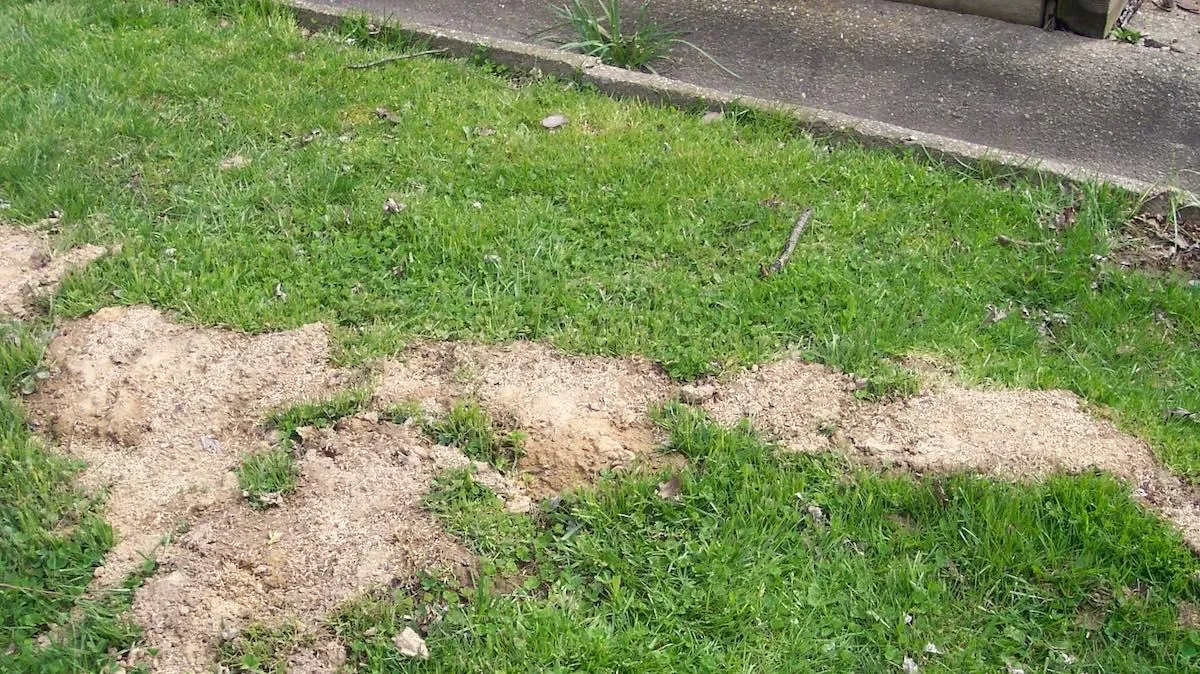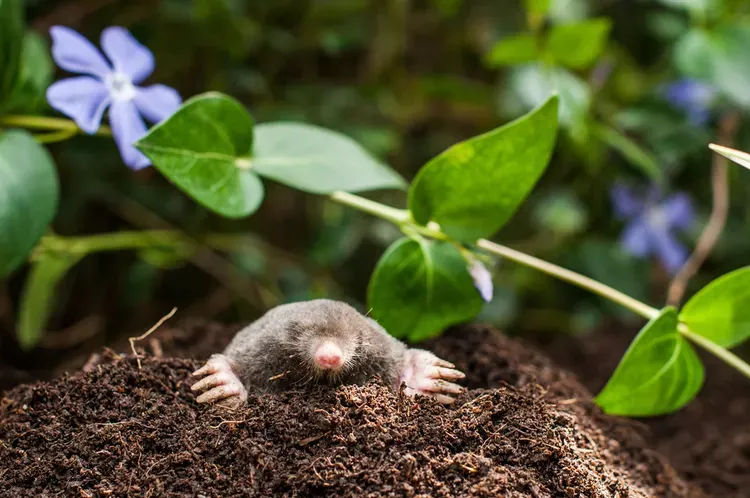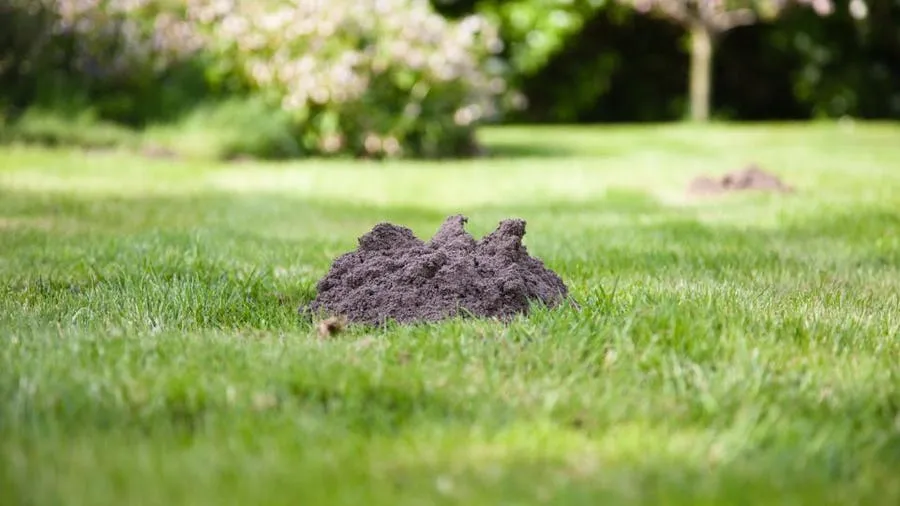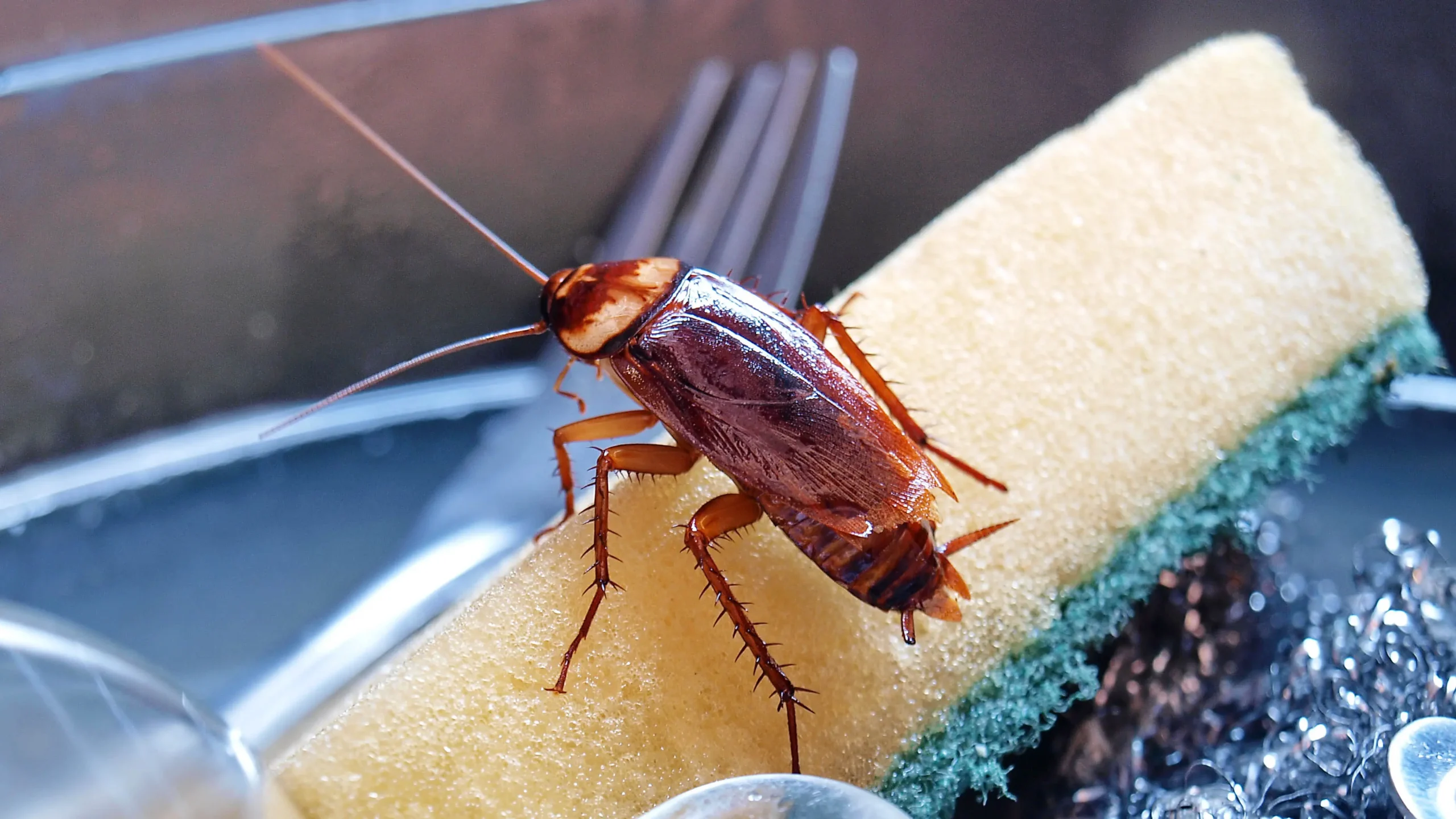You can tell you have a mole around when you notice a pattern of 3- to 5-inch raised, rounded ridges running across your lawn, interspersed with tiny volcanic-looking patches of dirt.
Because these small mammals tunnel through plants, they can quickly cause a great deal of damage.
Their tunnels quickly turn brown because as they burrow through the ground, they uproot roots.

One advantage is that moles consume harmful insects and aid in aerating the soil. Continue reading to find out how to get rid of moles in your yard before they cause significant harm.
Simple Ways on How to Get Rid of Moles
Below are the various ways to get rid of moles in your front yard;
1. Identify Active Mole Runways
Mole runways are examples of high-traffic areas that must be identified before you can set traps or baits. Using a stick or your index finger, poke holes into the top of the soil close to a mole hole to locate these runways.
The hole is a prime runway and an excellent location to trap moles if it is fixed in a day or two. Here are some additional methods for locating main runways:
- Runways typically travel in an essentially straight line.
- Usually, runways join two mounds or two distinct runway systems.
- They frequently abide by fencerows, concrete walkways, and other man-made boundaries.
- They might go along a field’s or yard’s wooded edge.
2. Set Mole Traps
The best way to get rid of moles is by trapping them. Harpoon and scissor-jaw traps are two examples of modern mole traps that use deadly techniques to swiftly wipe out mole populations.
They don’t have the potential to accumulate chemicals or cause secondary poisoning in the nearby ecology, and they provide moles with a high degree of target specificity.
Remember that mole trapping calls for both persistence and ingenuity. Because of their intelligence, moles are better than many other small mammals at spotting and avoiding improperly set or placed traps.
3. Start a Baiting Program
Poisoning moles in their burrows is known as baiting. Grain baits, gel baits, and synthetic worm baits are the three main kinds of mole baits that are typically available. But not all of them are made equally. What you should know is as follows:
1. Because the effectiveness of grain pellet bait formulations varies greatly depending on the area and mole species present, the results have been inconsistent.
2. During specific seasons of the year, first-generation anticoagulant chlorophacinone pellet baits are effective; however, mole populations may need to be eliminated by repeated applications, which could take up to six weeks.
3. Since earthworm-style baits can kill moles after just one feeding, those containing the rodenticide bromethalin are usually regarded as the most effective.
After consuming earthworm-style baits, moles typically die 12 to 24 hours later. Furthermore, since the primary food source for moles is soil invertebrates, earthworm-style baits typically appeal to them.
Poisoning moles usually die underground in their tunnels, so one advantage of using baits is that their bodies won’t need to be found and disposed of.
For maximum effectiveness, apply baits once a week for a maximum of six weeks. High-success bait formulations, such as gel baits containing the anticoagulant warfarin, should be considered.
4. Consider Applying Fumigants
Currently, gas cartridges and aluminum phosphine tablets are the two fumigants that are federally registered to control moles. That being said, fumigation is not always a reliable method of controlling moles.
Any fumigant you use must be inserted deeply into the mole tunnel for fumigation to be successful. Fumigants should also only be used when the soil’s moisture content is high enough to contain the gas inside the tunnel.
Additionally, fumigant may need to be applied frequently or in large amounts, which makes this conventional control method significantly more costly and time-consuming than baiting or trapping.
5. Eliminate Mole Food Sources
Are you wondering how to repel moles? Take away their sources of food. Moles find less attraction in their habitat when you remove the grubs and other insects that they eat in your yard.
It is advised to use milky spores, or beneficial nematodes to control grub populations. Instead, use an insecticide for quicker results.
6. Create Dig-Proof Barriers
Dig a trench around the area you want to keep private, about two feet deep and six inches wide. This will create a man-made border around your lawn and garden.
Line the trench with hardware cloth or wire mesh with holes ¾ inch or less, or fill it with rocks. This is a labor-intensive, long-term fix that works well to prevent moles from digging up your yard.
7. Keep Your Lawn Tidy
Undercover, moles feel most secure. Eliminating their shelter is therefore a great way to persuade them to move on.
Remember this when you mow your lawn and maintain your garden beds. Do not cover beds with thick mulch layers and get rid of any organic debris piles or wood stacks.
Reducing watering might also be a good idea because too much moisture attracts insects and makes the perfect environment for moles.
What Attracts Moles to Your Yard?

It can be frustrating when mole tunnels appear in your garden or yard. Because of the availability of their favorite food sources, the cool weather, and the attractive landscaping, moles are attracted to yards and gardens.
1. Food Source
Because they are primarily attracted to yards with an abundance of insects, grubs, and worms, moles will naturally gravitate toward these areas.
Moles are drawn to yards with abundant insect populations because they can detect their subterranean prey with their keen sense of smell.
Mole populations indicate a mole buffet, which attracts moles to tunnel and investigate below ground.
2. Cool Temperatures
Since moles are nocturnal animals and like cooler weather, their preference for moist, loose soil facilitates their ability to tunnel easily.
In addition, cooler settings typically support greater soil activity from insects and worms, which is consistent with moles’ preferred diet.
3. Landscaping Elements
Because landscaping elements like patios, walkways, and retaining walls often affect the distribution of soil moisture and create moist pockets that stimulate insect activity, moles are drawn to these areas.
Mostly, moles eat earthworms. Although they do consume grubs, it’s a common misconception that moles are present in lawns because of grubs. Therefore, it will not be effective to control moles using grub control products.
Mole populations persist despite grub-free lawns due to the earthworm, which is a staple in their diet.






